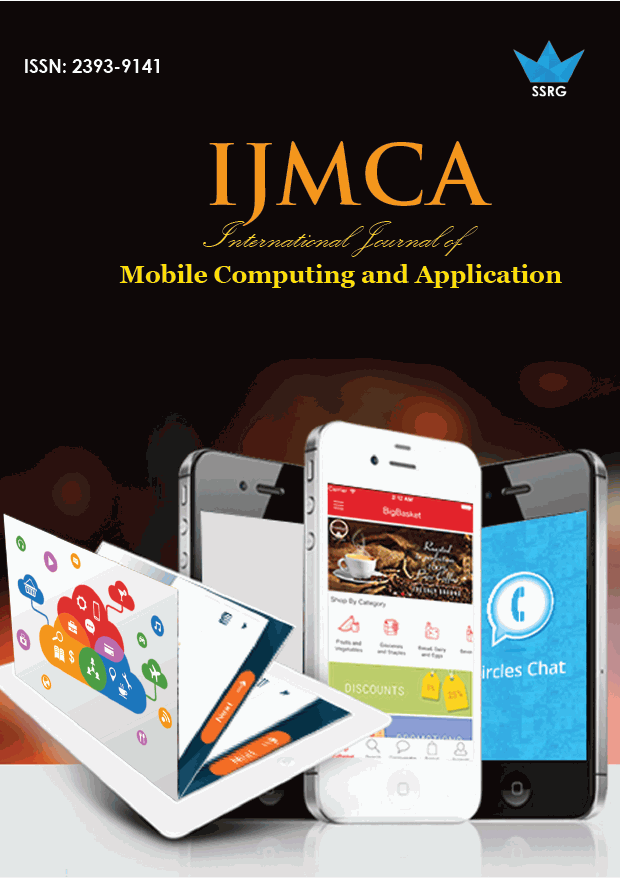Discretion Conserving Mining of Association Rules

| International Journal of Mobile Computing and Application |
| © 2017 by SSRG - IJMCA Journal |
| Volume 4 Issue 3 |
| Year of Publication : 2017 |
| Authors : Peng ping and Qiang |
How to Cite?
Peng ping and Qiang, "Discretion Conserving Mining of Association Rules," SSRG International Journal of Mobile Computing and Application, vol. 4, no. 3, pp. 1-5, 2017. Crossref, https://doi.org/10.14445/23939141/IJMCA-V4I6P101
Abstract:
Association rules mining is one of the most important techniques of data mining that are used to extract the association patterns from large databases. Association rules are one of the most important assets of any organization that can be used for business development and profitability increase. Association rules contain delicate information that threatens the discretion of its publication and they should be hidden before publishing the database. The aim of beating association rules is to delete delicate association rules from the published database so that possible side effects are reduced. In this paper, we present a heuristic algorithm DCR to hide delicate association rules. In the proposed algorithm, two collecting operations are performed on the delicate association rules and finally, a bunch of smaller collections is chosen to hide. A selection of a smaller bunch of collections reduces the changes in the database and side effects. The results of performing experiments on real databases, shows the impact of the proposed algorithm on missing rules reduction.
Keywords:
Data Mining, Association Procedures, Frequent Item-sets, Isolation Conserving Data Mining, Collecting
References:
[1] Yi-Hung Wu, Chia-Ming Chiang, and Arbee L.P. Chen, Senior Member, IEEE Computer Society, “Beating Sensitive Association Rules with Limited Side Effects”, IEEE TRANSACTIONS ON KNOWLEDGE AND DATA ENGINEERING, VOL. 19, NO. 1, JANUARY 2007.
[2] Chun-Wei Lin, Binbin Zhang, Kuo-Tung Yang and Tzung-Pei Hong, “Efficiently Hiding Sensitive Itemsets with Transaction Deletion Based on Genetic Algorithms”, Hindawi Publishing Corporation, the Scientific World Journal, Volume 2014, Article ID 398269 September 2014.
[3] FoscaGiannotti, Laks V. S. Lakshmanan, Anna Monreale, Dino Pedreschi, and Hui (Wendy) Wang, “Privacy-Preserving Mining of Association Rules From Outsourced Transaction Databases”, IEEE SYSTEMS JOURNAL, VOL. 7, NO. 3, SEPTEMBER 2013.
[4] TamirTassa, “Secure Mining of Association Rules in Horizontally Distributed Databases”, IEEE TRANSACTIONS ON KNOWLEDGE AND DATA ENGINEERING, VOL. 26, NO. 4, APRIL 2014.
[5] Yaping Li, Minghua Chen, Qiwei Li, and Wei Zhang, “Enabling Multilevel Trust in Privacy Preserving Data Mining”, IEEE TRANSACTIONS ON KNOWLEDGE AND DATA ENGINEERING, VOL. 24, NO. 9, SEPTEMBER 2012.
[6] Chun-Wei Lin, Tzung-Pei Hong and Hung-Chuan Hsu, “ Reducing Side Effects of Hiding Sensitive Itemsets in Privacy Preserving Data Mining”, Hindawi Publishing Corporation, the Scientific World Journal, Volume 2014, Article ID 235837 April 2014.
[7] VineetRichhariya., and PrateekChourey., “A Robust Technique for Privacy Preservation of Outsourced Transaction Database” International Journal of Research in Engineering & Technology (IJRET), Vol. 2, Issue 6, Jun 2014, 51-58.
[8] Gabriel Ghinita, Member, IEEE, PanosKalnis, and Yufei Tao, “Anonymous Publication of Sensitive Transactional Data”, IEEE TRANSACTIONS ON KNOWLEDGE AND DATA ENGINEERING, VOL. 23, NO. 2, FEBRUARY 2011.
[9] Sara Hajian and Josep Domingo-Ferrer, Fellow, IEEE, “A Methodology for Direct and Indirect Discrimination Prevention in Data Mining”, IEEE TRANSACTIONS ON KNOWLEDGE AND DATA ENGINEERING, VOL. 25, NO. 7, JULY 2013.
[10] DimitriosKarapiperis and Vassilios S. Verykios, Member, IEEE, “An LSH-Based Blocking Approach with a Homomorphic Matching Technique for Privacy-Preserving Record Linkage”, IEEE TRANSACTIONS ON KNOWLEDGE AND DATA ENGINEERING, VOL. 27, NO. 4, APRIL 2015.

 10.14445/23939141/IJMCA-V4I6P101
10.14445/23939141/IJMCA-V4I6P101